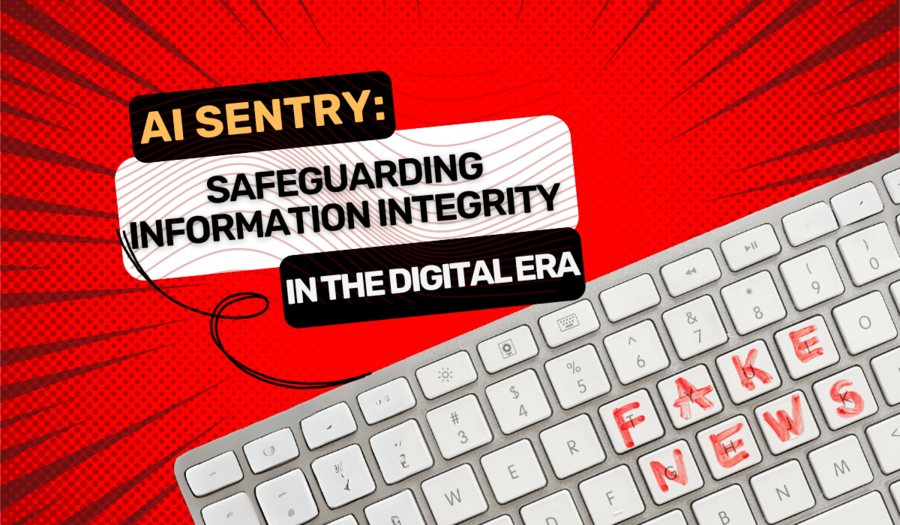
In our ever-evolving society, digital technologies are reshaping the human experience, opening doors to progress while ushering in a new era of challenges. At the forefront of these challenges is the pervasive issue of fake news and disinformation, spreading like wildfire through the vast expanse of the internet. The consequences of misinformation can be severe, influencing public opinion, political landscapes, and even public health. As society grapples with the challenges posed by this digital epidemic, artificial intelligence (AI) has emerged as a powerful ally in the battle against fake news.Buckle up; we're about to explore how AI applications leverage the power of social media data to unmask fake news, identifying sensational language and evaluating the credibility of online sources.
The Pervasiveness of Fake News
One of the biggest challenges is the ease with which erroneous information, frauds, and false narratives may originate and spread. It's a jungle out there, and for the typical internet user, figuring out fact from fiction has become a daunting task.
AI Steps In
Recognizing the need for a sophisticated approach to tackle this problem, AI technologies have been developed to analyze vast amounts of social media data. These apps use cutting-edge machine learning and algorithms to sift through the noise and find patterns that point to misinformation.
Sensational Language Detection
One of AI's secret weapons in the fight against fake news is its knack for detecting sensational language. Misinformation often relies on emotionally charged words and exaggerated claims to capture attention and sway public sentiment. Imagine AI as a linguistic detective, trained to spot these red flags and raise an alarm when content exhibits the hallmarks of fake news.
By dissecting sentiment, tone, and lexical choices in social media posts, AI becomes a digital truth-seeker, swiftly pinpointing potentially misleading content. This automated process ensures a timely intervention, preventing the wildfire spread of harmful information.
Authority Assessment
In the quest for truth, AI doesn't stop at spotting sensational language. It's also a keen judge of credibility when it comes to online sources. Not all information is created equal, and AI understands the importance of evaluating the reliability of a source.
AI applications employ a blend of criteria to assess source authority. Historical accuracy, engagement from reputable entities, and overall community reputation all come under scrutiny. By cross-referencing this information, AI algorithms assign credibility scores, helping users navigate the credibility landscape of the vast digital information sea.
Network Analysis
But AI's role doesn't end with individual posts and sources; it extends to network analysis. Disinformation campaigns are often intricate webs of coordinated efforts, with multiple accounts working together to amplify false narratives. AI algorithms, akin to digital detectives, unravel these patterns by scrutinizing connections and interactions between accounts.
Through network analysis, AI unveils the relationships between users contributing to the spread of disinformation. By identifying and neutralizing the core sources of misleading information, AI disrupts the very infrastructure sustaining fake news campaigns.
Challenges and Ethical Considerations
Yet, in this digital saga, challenges and ethical dilemmas abound. AI algorithms, while powerful, are not infallible. There's the risk of inadvertently flagging legitimate content or missing sophisticated disinformation tactics. Striking the right balance between the freedom of expression and the necessity to curb misinformation poses a complex ethical dilemma.
There is also the risk of bias in AI systems, as algorithms may inadvertently reflect the biases present in the data they were trained on. Developers must actively work to mitigate these biases to ensure that AI tools are fair and effective in addressing the diverse nature of disinformation.
As fake news continues to pose a threat to the integrity of information in the digital age, AI stands out as a formidable tool in the fight against disinformation. By leveraging social media data, AI applications can detect sensational language, assess source credibility, and analyze network patterns to identify and mitigate the impact of fake news.
Some notable tools and platforms in this domain include:
ClaimReview Schema: Implemented by search engines like Google, ClaimReview is a markup schema that allows fact-checking organizations to identify and label claims on the web. This helps in surfacing fact-checked information.
Truthy Project: This research project focuses on the spread of information on social media. While not a tool for public use, it explores the dynamics of information diffusion and misinformation.
NewsGuard: This browser extension uses human analysts to evaluate the credibility of news websites and provides users with a "green" or "red" rating based on their trustworthiness.
Deepware Scanner: An application that uses AI to analyze information integrity by assessing the reliability of news sources, websites, and articles.
Hoaxy: This tool visualizes the spread of claims and related fact-checking on social media. It helps users understand how information is disseminated and whether it has been debunked.
While challenges and ethical considerations remain, the ongoing development of AI technologies offers hope in creating a more resilient information ecosystem. As society navigates the complex landscape of digital information, the synergy between human judgment and AI capabilities will be crucial in unmasking disinformation and safeguarding the integrity of the information we consume.